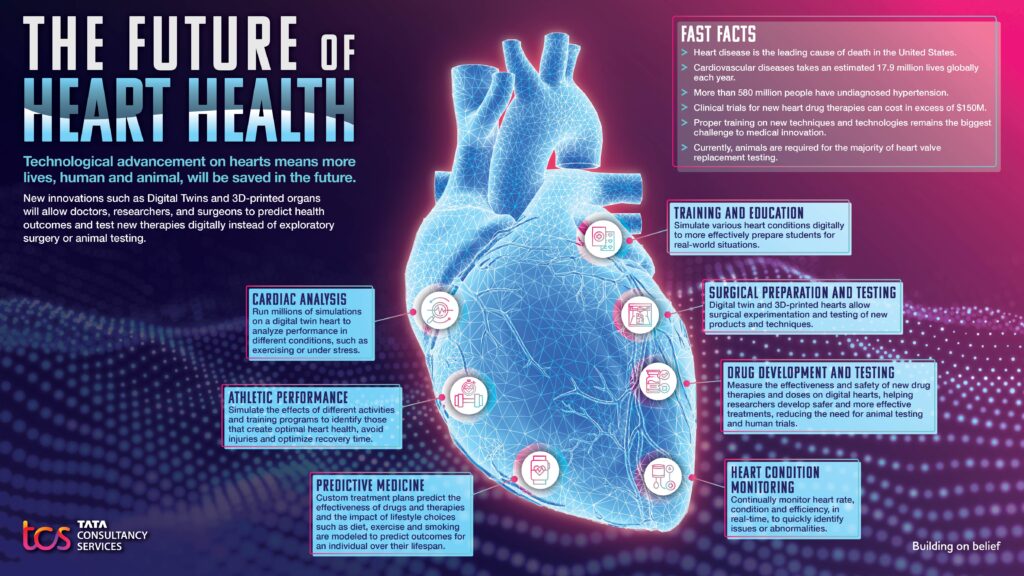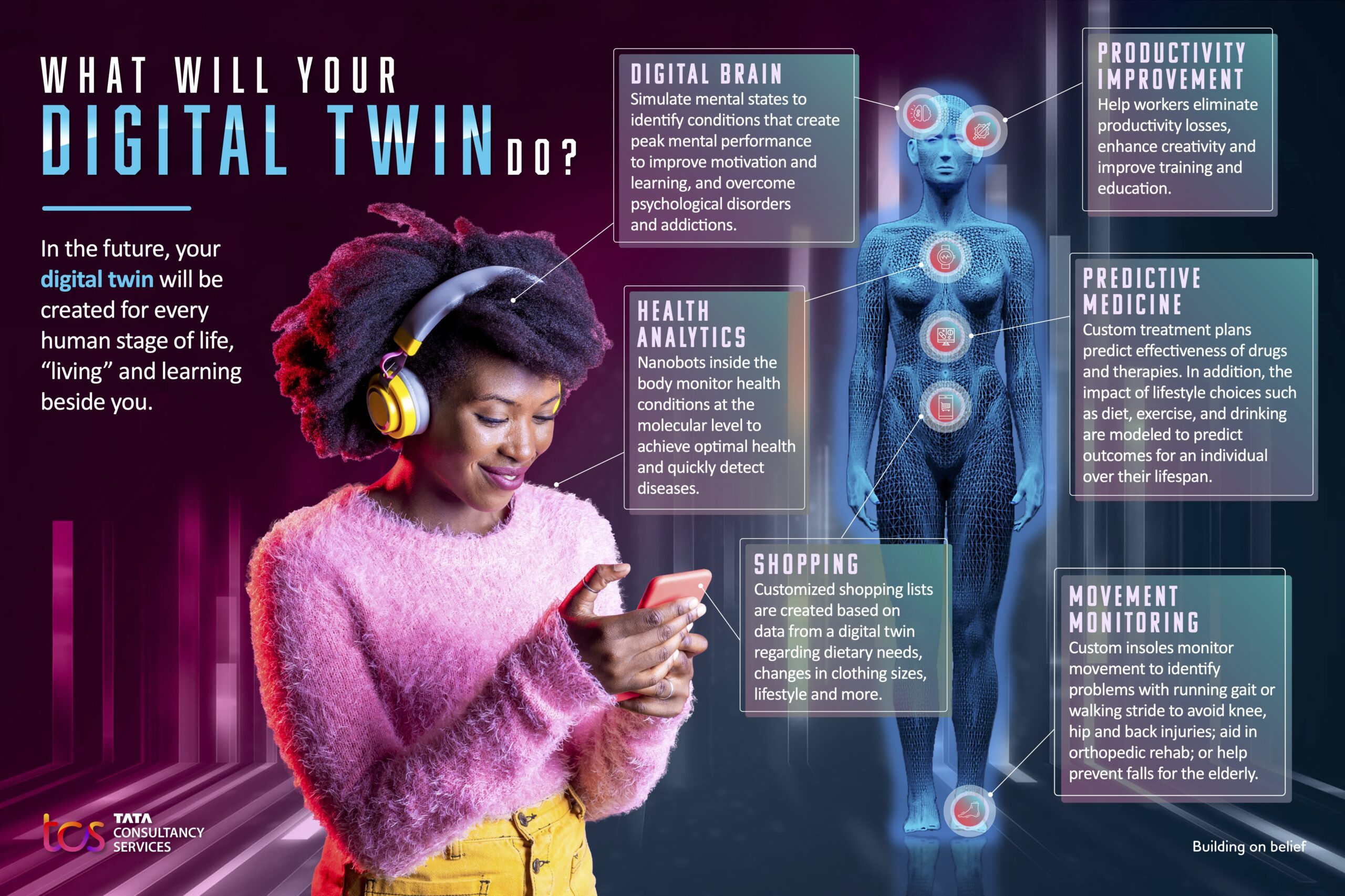AiThority Interview with Frank Diana, Principal Futurist at Tata Consultancy Services

Hi, Frank. Welcome to the AiThority.com Interview Series. Please tell us about your current role in TCS and the technologies you currently work with.
As the Principal Futurist for TCS, my role is to help both our clients and internal teams understand emerging business and technology trends and their impact on business and society, whether in the next decade or the coming quarter. Since TCS is the second largest IT services provider in the world and a leading consultant to Fortune 500 companies, that means that the type of technologies we work with include everything from data analytics to cloud computing to AI and, of course, digital twins. Digital Twins have been my team’s focus this year because of their potential to transform industries, as shown in our recently released “Digital Twindex” report.
What is the most contemporary definition of “Digital Twin” technology?
Digital twin technology enables the creation of a real-time, virtual counter part of something in the physical world, allowing us to learn insights by testing multiple scenarios. Digital twins can replicate a person, place, or thing – anything that can be monitored and generate data can be turned into a digital twin. Some digital twins are accessed as backend software applications, while others might leverage VR to be fully interactable in cyberspace.
Recommended: AiThority Interview with Gary Kotovets, Chief Data and Analytics Officer at Dun & Bradstreet
How do you analyze the innovative trends in the Digital Twin ecosystem? What are the key factors that have led to the rapid advancements in the landscape?
Rapid innovation in digital twins has become possible because of the convergence of a number of other technologies, especially cloud computing, AI/ML, IoT/5G, and AR/VR. At the same time, digital twins have proven their utility with over a decade of success within manufacturing. Together, these factors have made it possible for digital twin use-cases to become democratized across industries. When it comes to analyzing trends, TCS Futurists practice Foresight, a proven method of envisioning the future that involves forecasting, horizon-scanning, and scenario planning.
Healthcare, life sciences and retail are the biggest adoption centers of Digital twin technology. Could you please explain the forces that could lead to disruptions in these industries?
Healthcare/Life Sciences and Retail are likely to see the earliest impact and disruptions from digital twins because these industries are already investing in and adopting advanced data practices, which provide them with a strong digital core that makes extending to digital twins relatively easier. When looking at Retail, for instance, the industry has been an early investor in the Metaverse, which dovetails with the AR/VR elements to digital twins. In addition, digital twins in healthcare and retail are going to have the most evident impact for end consumers: people want to be able to shop in new ways and with more personalization, and people also want to live longer and healthier lives, which digital twins enable by modeling and predicting health outcomes based on diet, exercise, environmental conditions, etc.
How do concepts such as AI, Internet of Things, and automation tie in with digital twin technologies?
These concepts are the foundation of digital twins. Digital twins do not represent a single technology, but a convergence of technologies which enables new and exponentially more impactful use-cases. AI is how digital twins can realistically adapt to hypothetical scenarios, based on past real-world data; IoT is the mechanism through which sensors gather data from real-world objects; and automation makes it all possible at speeds and scales that humans aren’t capable of.
Recommended: AiThority Interview with Bill Patterson, EVP and General Manager, Applications at Salesforce
Could you specifically provide an example of Digital Twin in the healthcare industry and its outcomes?
A digital twin use-case I am personally very excited about is what TCS calls “Digital BioTwins.” With a Digital Heart, for example, one can be modeled based on data from MRIs, heartbeat monitors, and other existing technologies. TCS then creates a digital model of the heart which can be analyzed for possible reactions to different drugs, predict future outcomes, and more. In addition, once the heart has been modeled as a digital twin, it can then be 3D printed, giving doctors, surgeons, and researchers a physical version they can practice operating on, or experiment with new surgical techniques – for instance, replacing heart valves. Not only will this lead to new innovations, it will also remove the need for animal testing.
The digital twin of human form could be the most challenging thing to do for engineers. How far are we from creating the first digital twin of a human body?
Our Digital Twindex, which surveyed leading futurists, scientists, and other experts, predicts that the first full digital twin of the entire human body will be created in 10 or more years, given the complexity and regulatory landscape. However, once this is accomplished, it will be an extremely powerful use-case. Consider the benefits if you had a digital twin created of you at birth, which would then learn and provide feedback and recommendations to you and your healthcare providers you at every stage of life.
What are the pertinent risks in engineering and management of digital twin components?
At the center of the risks and challenges in creating digital twins is data – governing it and managing it. Creating truly effective digital twins means collecting, storing, and accessing huge amounts of data. The ultimate form of a digital twin is one that uses real-time data from sensors as well as historical data from past scenarios to adapt to what is happening in the physical world, in real-time. You must have a strong digital core with the ability to leverage data across edge to core to cloud. Beyond the IT system complexities, you will also need strong cybersecurity, governance, and backup policies.
Recommended: AiThority Interview with Alistair Dent, Chief Strategy Officer at Profusion
Could security and trust issues derail the digital twin from delivering on its promises?
Absolutely. Similar to the conversations we are seeing with Generative AI today, we need to ensure that all the pieces are in place to ensure that digital twin technology is used ethically and governed by appropriate regulations. Given how many different things digital twins can do, we need to be thinking about, for example, what it means for companies to access your digital twin for personalized advertising – or if it is appropriate to create a twin of someone who is deceased so that you can continue interacting with them after their physical body has passed on. People need to know that companies are investing in digital twins in a responsible way.
Thank you, Frank ! That was fun and we hope to see you back on AiThority.com soon.
[To share your insights with us, please write to sghosh@martechseries.com]
Frank Diana, Futurist with the $25.7b technology leader TCS, speaks to Chief Innovation Officers to help Fortune 500 companies prepare for the next decades, which will see humans face transformational events on scales even larger than the current pandemic. Having held a diverse range of C-Suite positions across industries, Frank is uniquely positioned to connect the dots between different technological and societal trends and predict real-world, transformational business impact. He is a frequent keynote speaker and contributor for organizations from MIT to the World Economic Forum, and more.
Tata Consultancy Services is an IT services, consulting and business solutions organization that has been partnering with many of the world’s largest businesses in their transformation journeys for over 50 years. TCS offers a consulting-led, cognitive powered, integrated portfolio of business, technology and engineering services and solutions. This is delivered through its unique Location Independent Agile™ delivery model, recognized as a benchmark of excellence in software development.
A part of the Tata group, India’s largest multinational business group, TCS has over 613,000 of the world’s best-trained consultants in 55 countries. The company generated consolidated revenues of US $25.7 billion in the fiscal year ended March 31, 2022, and is listed on the BSE (formerly Bombay Stock Exchange) and the NSE (National Stock Exchange) in India. TCS’ proactive stance on climate change and award-winning work with communities across the world have earned it a place in leading sustainability indices such as the MSCI Global Sustainability Index and the FTSE4Good Emerging Index.




Comments are closed.